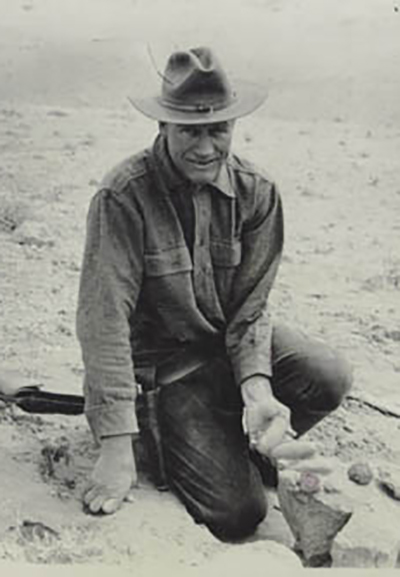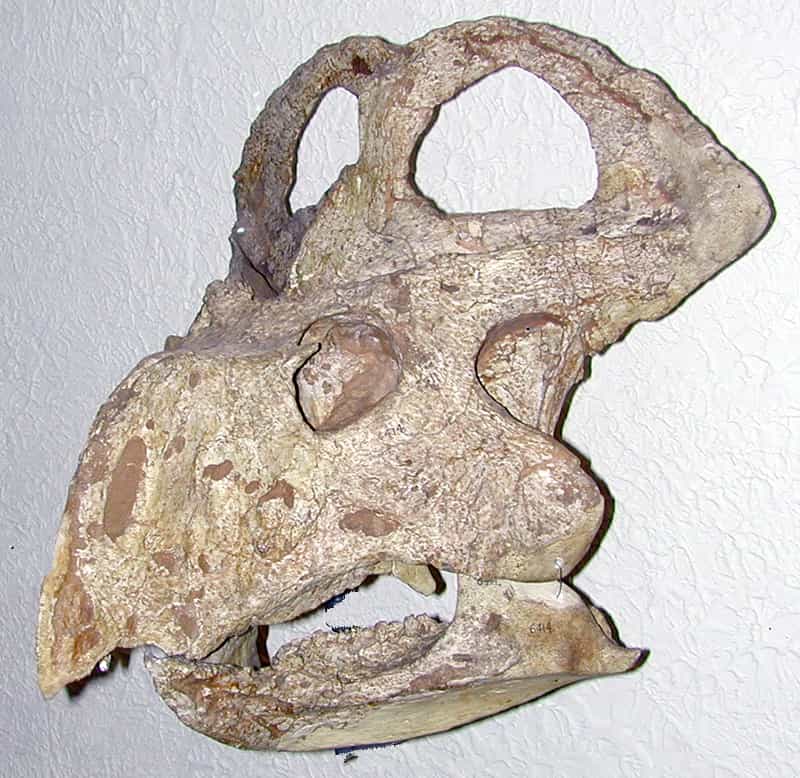Roy’s Mysterious Eggs
In 1923, Roy Chapman Andrews led an expedition team to Flaming Cliffs, Central Asia. They discovered dinosaur eggs! His team thought these eggs were from a Protoceratops because this kind of dinosaur was the most commonly found fossil in the area. Then, in the 1990s, new evidence showed that these eggs were from Oviraptor, not from Protoceratops.
Scientific Name: Protoceratops andrewsi
Pronunciation: pro-toe-SER-uh-tops an-DROO-zie
Meaning: "first-horned face"
Locality Found: Mongolia, China
Age: Late Cretaceous, 80 million years ago
Length: 1.8 meter (6 feet) long
Weight: 225 kilograms (500 pounds)
Characteristics: Probably one of the best-known extinct dinosaurs! Scientists think that males and females can be told apart by looking at the shape of the skull and size of their frill.

Protoceratops fossils are very common in the Gobi Desert. They are so common that they have been nicknamed the "Sheep of the Mesozoic." Eighty million years ago, there were as many Protoceratops in the Gobi as there are sheep living there today. In fact, Protoceratops fossils are so numerous that scientists can't collect every one that they find. They have to decide which specimens will tell them the most about life in the Cretaceous and collect only those fossils.

In which Period of the Mesozoic Era did Protoceratops live?
Triassic (248 to 205 million years ago)
Jurassic (205 to 144 million years ago)
Cretaceous (144 to 65 million years ago)
Correct!
Protoceratops lived about 80 million years ago during the Cretaceous Period.
Protoceratops had a bump on its nose, which is where the horn on the nose of some large ceratopians is seen.
Fact
Some ceratopians, such as Triceratops, had a big, pointy horn. Others, like Protoceratops, had a smaller version.
Protoceratops was a very common animal. The number of specimens you come across at Ukhaa Tolgod is quite staggering!

Peter Makovicky
paleontologist




 Biodiversity
Biodiversity
 Brain
Brain
 Genetics
Genetics
 Marine BiOLogy
Marine BiOLogy
 MicrobiOLogy
MicrobiOLogy
 PaleontOLogy
PaleontOLogy
 ZoOLogy
ZoOLogy
 AnthropOLogy
AnthropOLogy
 ArchaeOLogy
ArchaeOLogy
 Astronomy
Astronomy
 Climate Change
Climate Change
 Earth
Earth
 Physics
Physics
 Water
Water
